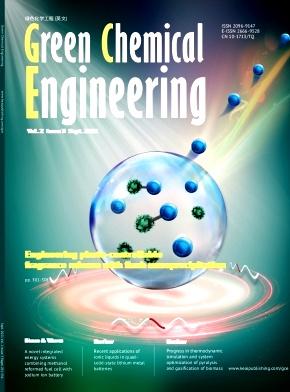Synergistic coordination-regulated separation of nickel and cobalt from spent Ni(II) and Co(II) bearing choline chloride/ethylene glycol electrolyte: theoretical and experimental investigations
IF 7.6
Q1 ENGINEERING, CHEMICAL
引用次数: 0
Abstract
Developing efficient and environmentally friendly metal recovery technologies from secondary resources is crucial for enhancing resource utilization and promoting environmental sustainability. However, metals with similar physicochemical properties pose significant challenges in the recovery process, particularly for nickel and cobalt. Herein, we present a coordination-regulated approach utilizing water-, temperature-, and pH-codrived to achieve sequential precipitation recovery of nickel and cobalt from waste choline chloride/ethylene glycol (Ethaline) electrolyte containing Ni(II) and Co(II) ions. By carefully adjusting water content, temperature, and pH, we can control the speciation of Ni(II) ([NiCl(H2O)2(EG)2]+) and Co(II) ([CoCl2(H2O)2(EG)2]0) ions in the Ethaline-based electrolyte, thereby facilitating nickel preferential precipitation. Additionally, further introducing water into the Co(II)-rich phase promotes the formation of [CoCl(H2O)3(EG)2]+ complex ions, leading to efficient separation of cobalt. When oxalic acid is used as a precipitant, the recovery efficiencies for nickel and cobalt reach 96.3% and 97.5%, respectively, with purities of 97.8% and 98.5%. Importantly, distilling the water-containing solvent allows for regeneration of Ethaline with a yield rate as high as 97.1%, while maintaining its structural stability. This proposed strategy offers a promising pathway for sustainable metal recovery from spent Ethaline electrolytes containing metal ions while enabling solvent regeneration.

从含Ni(II)和Co(II)的氯化胆碱/乙二醇废电解液中协同配位调控镍钴分离:理论和实验研究
开发高效、环境友好的二次资源金属回收技术对提高资源利用率和促进环境可持续性至关重要。然而,具有类似物理化学性质的金属在回收过程中构成了重大挑战,特别是镍和钴。在此,我们提出了一种协调调节的方法,利用水、温度和ph驱动,从含有Ni(II)和Co(II)离子的废氯化胆碱/乙二醇(Ethaline)电解质中实现镍和钴的顺序沉淀回收。通过精心调节水的含量、温度和pH值,我们可以控制Ni(II) ([NiCl(H2O)2(EG)2]+)和Co(II) ([CoCl2(H2O)2(EG)2]0)离子在乙烷基电解质中的形态,从而促进镍的优先沉淀。此外,在Co(II)富相中进一步引入水,可促进[CoCl(H2O)3(EG)2]+络合离子的形成,从而实现钴的高效分离。以草酸为沉淀剂时,镍和钴的回收率分别达到96.3%和97.5%,纯度分别为97.8%和98.5%。重要的是,对含水溶剂进行蒸馏可以使乙炔再生,收率高达97.1%,同时保持其结构稳定性。该策略为从含金属离子的废乙炔电解质中可持续回收金属提供了一条有希望的途径,同时实现了溶剂再生。
本文章由计算机程序翻译,如有差异,请以英文原文为准。
求助全文
约1分钟内获得全文
求助全文
来源期刊

Green Chemical Engineering
Process Chemistry and Technology, Catalysis, Filtration and Separation
CiteScore
11.60
自引率
0.00%
发文量
58
审稿时长
51 days
 求助内容:
求助内容: 应助结果提醒方式:
应助结果提醒方式:


